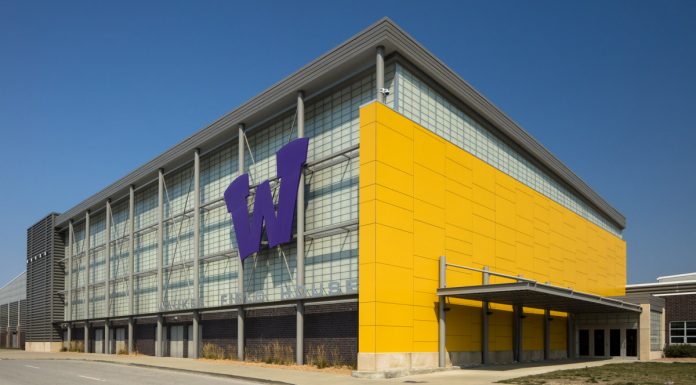When it’s wet, snowy, or icy, it can be tricky to see the painted lines on Iowa roads, potentially making it tough for drivers to see where they are on the road. To help improve road safety, the Department of Transportation is working to find better, more durable paint systems that will help motorists more clearly see lines in adverse weather conditions. And this year, the Department is trying some new ideas in re-painting the lines on Iowa’s interstate highways. Most roadway paint is a fast-dry variety that is mixed with tiny glass beads to reflect light. When the paint lines are covered with snow, ice, or water, the beads don’t reflect light as well, making the lines more difficult to see. In addition, the beads can wear down as snowplows scrape the lines and traffic drives over them, making them less reflective even in good weather. Because of this wear and tear, the DOT typically repaints all lane lines and centerlines on U.S. and state highways every year and the edge lines every other year on a rotating basis. Before 2023, all lines on the interstate were painted every year but the Department is transitioning to a new paint system that provides increased visibility in wet conditions and enhanced durability and will not need to be repainted every year. The Department will be applying a multi-component paint that is more durable than the previously used paint. They will also be widening the lines, going to six-inch-wide lines instead of the standard four inches. This change will make the lines more visible to drivers and recognizable to automated vehicle technologies. And they will be adding larger beads to the paint, which will shed water better and be more reflective. In applying the paint, the paint/bead mixture will be painted into grooves cut into the pavement surface, making the paint less susceptible to being scraped off by snowplows or worn down by traffic. Most interstate lane lines will be painted with alternating black and white paint, improving visibility, especially on lighter-colored pavements and during sunrise/sunset when the low sun angle makes it difficult to see the lane lines. Because the paint is more durable, the DOT expects to need to paint the interstates every 4-5 years instead of the current annual schedule. The change will mean a change in how the painting is done. The new mix would require significantly more expensive equipment to be purchased in order for DOT staff to do the painting. Instead, this task will be contracted out to vendors with the proper equipment.
REP. BEST: DOT Trying New Approach to Painting Lines on Interstate Highways
***The Iowa Standard is an independent media voice. We rely on the financial support of our readers to exist. Please consider a one-time sign of support or becoming a monthly supporter at $5, $10/month - whatever you think we're worth! If you’ve ever used the phrase “Fake News” — now YOU can actually DO something about it! You can also support us on PayPal at [email protected] or Venmo at Iowa-Standard-2018 or through the mail at:
PO Box 112
Sioux Center, IA 51250












